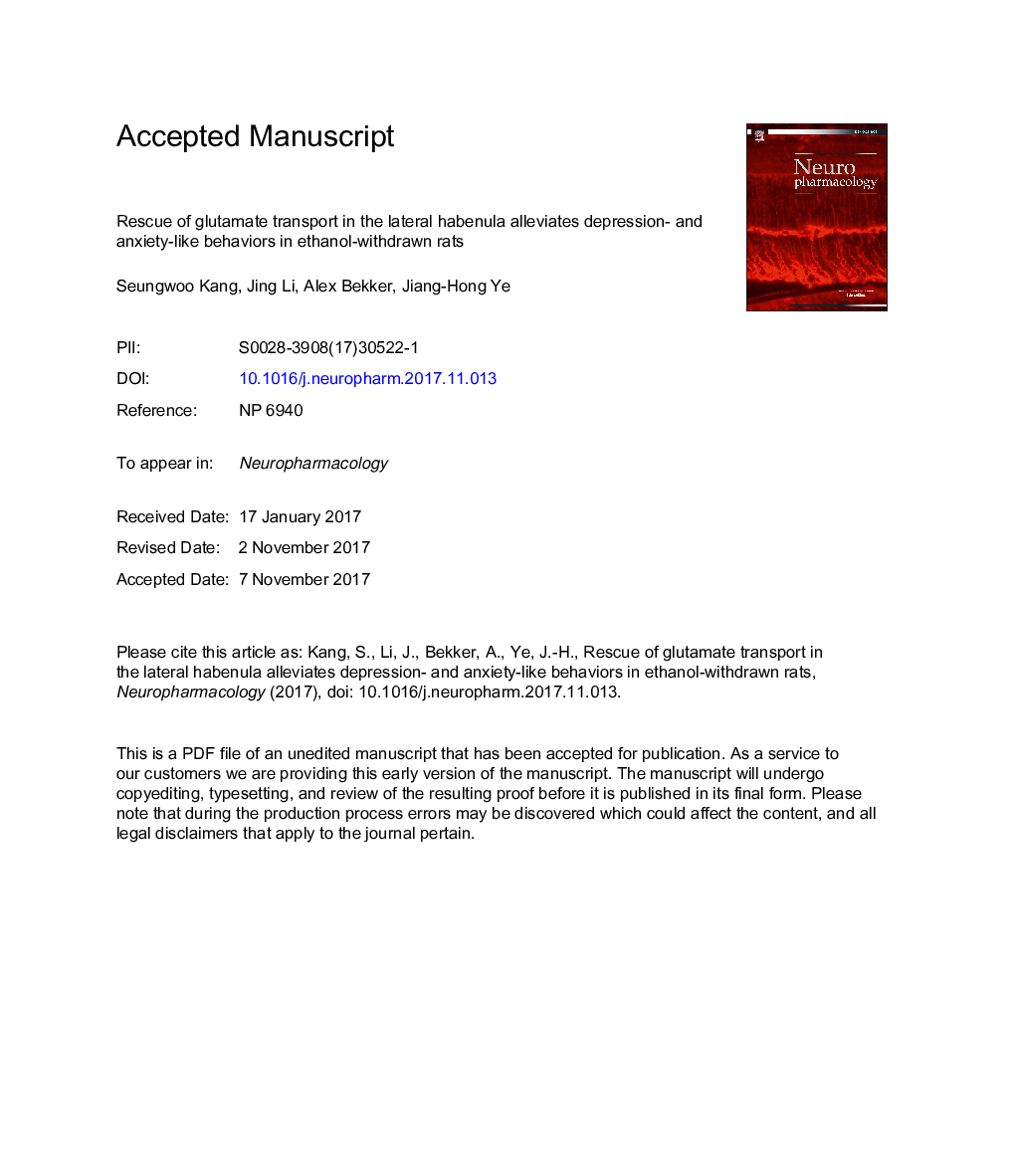| Article ID | Journal | Published Year | Pages | File Type |
|---|---|---|---|---|
| 8517401 | Neuropharmacology | 2018 | 36 Pages |
Abstract
Here we show that dihydrokainic acid (DHK), a GLT-1 blocker, potentiated glutamatergic transmission to LHb neurons in slices from ethanol naïve rats; this potentiation, though, was not observed in slices from rats withdrawn from repeated in vivo ethanol administration, suggesting reduced GLT-1 function. Furthermore, GLT-1 protein expression was reduced in the LHb of withdrawn rats. This reduction was restored by systemic administration of ceftriaxone, a β-lactam antibiotic known to increase GLT-1 expression. Systemic ceftriaxone treatment also normalized the hyperactivity of LHb neurons in slices from withdrawn rats, which was reversed by bath-applied DHK. Finally, systemic administration of ceftriaxone alleviated depression- and anxiety-like behaviors, which was fully blocked by intra-LHb administrations of DHK, suggesting that GLT-1's function in the LHb is critical. These findings highlight the significant role of LHb astrocytic GLT-1 in the hyperactivity of LHb neurons, and in depressive- and anxiety-like behaviors during ethanol withdrawal. Thus, GLT-1 in the LHb could serve as a therapeutic target for psychiatric disorders comorbid with ethanol withdrawal.
Related Topics
Life Sciences
Neuroscience
Behavioral Neuroscience
Authors
Seungwoo Kang, Jing Li, Alex Bekker, Jiang-Hong Ye,
